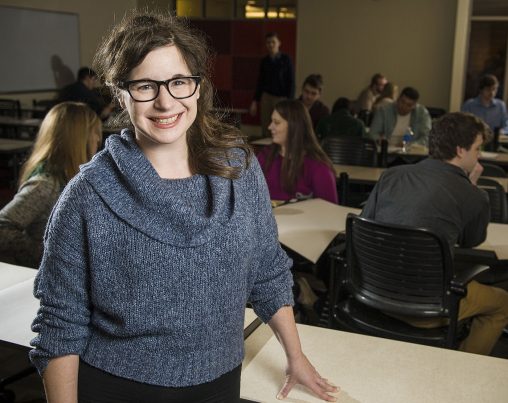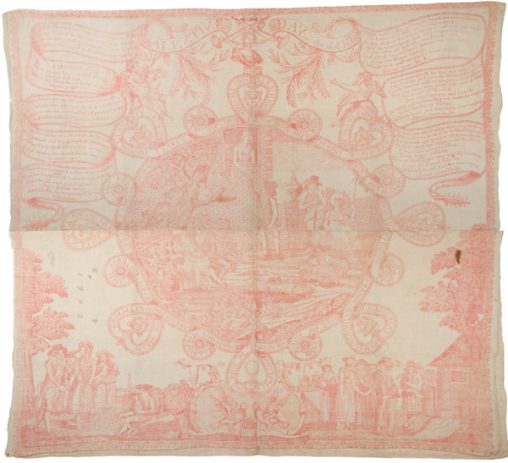
Crystal Lake, professor of English at Wright State, is researching how readers from the 17th and 18th centuries transformed literature into handcrafted objects that continue to inspire creative expression today.
To Crystal B. Lake, Ph.D., books are more than words on pages — they’re something readers bring to life.
“Literature often inspires people to turn the words they’ve been reading into something new they’ve made themselves,” said Lake, professor and director of graduate studies in English at Wright State University.
Her research has found that readers in the 17th and 18th centuries did just that — crafting needlepoint samplers stitched with lines from popular poems, designing board games inspired by bestsellers, creating waxwork figures of fictional characters, staging magic lantern shows based on trending plots and making pinprick portraits of favorite authors.
Lake calls these “literary objects.” While they date back centuries, she said they have modern versions that inspire student creativity and entrepreneurship today.
With support from the American Council of Learned Societies, Lake is documenting the history of literary crafts by writing a scholarly book titled “Reading/Making: Handcrafting Literature in the Long Eighteenth Century.”
“This will be the first book to document these objects systematically,” Lake said. “Rather than focus on manuscripts and paper trails, my project tracks literary crafts.”
Her research journey began in 2015, when she noticed an unusual item in a library archive: a 36-inch square of white linen printed in red with text and images. At first glance, it resembled a cross-stitch sampler, but it turned out to be a printed handkerchief featuring a romantic ballad, images of couples, hearts, mottoes and turtle doves.
“Likely this was a handkerchief that was exchanged as a Valentine,” she said in her grant application. “This object stopped me in my tracks because it made me realize that 18th-century readers didn’t need to have a book, or even a piece of paper, in their hands to engage in an act of reading.”
Since then, Lake has searched for more examples of handcrafted literary items dating from 1650 to 1850, a period often referred to as the “long 18th century.”
“Patient archivists and librarians around the world have helped me to identify more than 1,000 literary crafts,” she said.

This valentine handkerchief, “Valentine’s day, or, The 14th Febry.,” sparked Crystal Lake’s research of literary objects. “Courtesy of the Lewis Walpole Library, Yale University)
Her book will be organized around five categories of literary creations: textiles, such as needlework; toys and board games; paper works, such as silhouettes, paper dolls and fans; sculpted items, including waxworks, porcelain figurines and snuffboxes; and immersive environments, such as theatrical installations and garden designs. All of them were inspired in some way by a work of literature.
Lake is fascinated that literary items continue to be created. For instance, today’s readers can find words from their favorite books on leggings, scarves, coffee cups and stickers, to name a few.
“Reading has more in common with crafting than we usually realize,” she said. “People think reading is something we do with our eyes and inside our heads, but literature also inspires us to turn what we’ve read into something new we can hold in our hands.”
Lake also sees potential for the project to inspire her students.
“I enjoy showing my students all the literary crafts I’ve found and asking them to imagine turning the books they’ve read into something they can make, share, display and market,” Lake said, adding, “I hope that crafty readers everywhere will be inspired and intrigued by my research.”

 2026 Alumni Achievement Awards celebrate distinguished Wright State community members
2026 Alumni Achievement Awards celebrate distinguished Wright State community members  Bags, boards and bonding
Bags, boards and bonding  More than 1,000 students to graduate at Wright State’s fall commencement ceremonies
More than 1,000 students to graduate at Wright State’s fall commencement ceremonies  Wright State’s Take Flight Program helps students soar high
Wright State’s Take Flight Program helps students soar high  Wright State Police Department delivers major donation to Raider Food Pantry
Wright State Police Department delivers major donation to Raider Food Pantry 